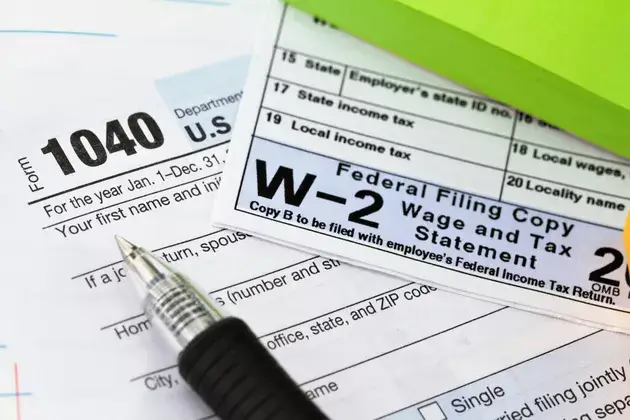12 Tax Changes You Need to Know
Why your 2024 return might not look like 2023’s. Here are 12 tax changes you need to know.
Table of Contents of 12 tax changes you need to know
Key takeaways
- Higher income thresholds for higher tax rates could lower your tax bill—or raise your refund.
- Changes in your personal situation might also affect how you fill out your tax return.
With the Consumer Price Index (a measure of how much Americans pay for common household goods over time) decelerating but still elevated, and potential changes to your personal situation, your 2024 return could look different from last year’s. Consult a tax advisor to get personalized help, but here are a few reasons you may owe taxes this year when you normally don’t—or have a smaller or larger refund or tax bill.
Changes for everybody
Each year, the IRS announces changes to certain tax breaks, like refunds and deductions, and it’s possible this year’s adjustments could affect you.
1. Marginal tax rate brackets changed
Whether your income went north or south—or even stayed the same—the rate at which your income is taxed could have changed when income ranges for the 7 federal tax brackets were adjusted for tax year 2024. Across the board, the brackets increased by 5.4% from 2023 because of inflation. For example, for single filers, the 22% tax bracket for the 2023 tax year started at $44,726 and ended at $95,375. It shifts up to between $47,151 and $100,525 for tax year 2024. What this means is that just because you were taxed at or above a marginal tax rate of 22% last year doesn’t mean history will repeat itself, no matter what happened with your income.
2. The standard deduction changed
Taking the standard deduction means you lower your taxable income by the government’s preset amount—no extra math or receipts required. For single filers and married individuals filing separately, that amount goes up $750 from 2023 to $14,600 in 2024. Married-filing-jointly filers can expect an increase of $1,500 for a deduction amount of $29,200.
3. Certain tax credits and deductions changed
First things first: Know the difference between a tax credit, which reduces the dollar amount of taxes you owe, and a tax deduction, which reduces your taxable income. For example, if you owe $1,000 in taxes but receive a $250 credit, you owe $750. If you claim a $250 deduction, you do not pay taxes on that $250. If your tax rate was 22%, that could reduce the amount of taxes you owe by $55—much less than a tax credit.
Here are a few credits and deductions that changed, potentially lowering your refund or resulting in a tax bill:
- Child Tax Credit: For tax year 2024, the max credit taxpayers can claim for each qualifying dependent children under 17 is $2,000. That’s unchanged from 2023. The credit phases out based on modified adjusted gross income and is nonrefundable, meaning if the credit is more than the taxes you owe, you won’t get any of the unused portion back. If you can’t take full advantage of the nonrefundable part of the Child Tax Credit, you may be able to claim the refundable part. Here’s what changes for 2024. The Additional Child Tax Credit refunds the unused portion of the Child Tax Credit—up to $1,700 per qualifying dependent—even if you don’t owe any tax. That’s up $100 from 2023. Consider consulting with a tax professional to see if you’re eligible for these credits.
- Adoption Credit: The max amount new adoptive parents may claim on qualified expenses went up to $16,810 for 2024 from $15,950 in 2023. The size of your credit begins lowering for taxpayers with modified adjusted gross incomes (MAGIs) over $252,150 and is unavailable to filers with MAGIs of $292,150 or more.
- Earned Income Tax Credit: Available to low- to moderate-income filers who meet certain criteria, this credit maxed out at $600 for a taxpayer with no children in 2023. The credit is worth more for tax year 2024 with a limit of $632 for a single filer with no children, and goes up to $7,830 for taxpayers with 3 or more qualifying children.
- Student loan interest deduction: While the maximum deduction of up to $2,500 hasn’t changed from 2023, the income eligibility limits have. For tax year 2024, joint filers with MAGI up to $165,000 can claim the whole deduction, and joint filers with MAGI up to $195,000 can deduct a portion. (This is up from $155,000 and $185,000, respectively, in 2023). The MAGI threshold for claiming this deduction also increased for single filers: from $75,000 in 2023 to $80,000 in 2024 to claim the entire deduction, with taxpayers with MAGIs up to $95,000 now being able to claim at least some deduction.
- Health savings account (HSA) and flexible spending account (FSA) deductible contributions: Contributing to these tax-advantaged accounts could lower your taxable income by even more for tax year 2024. If you maxed out your allowable contributions, you could lower your taxable income by $300 more than in 2023 for self-only HSA coverage and by $550 more for family HSA coverage. If you have an FSA, you can deduct $150 more—up to $3,200. And if you don’t use all that money and your plan allows it, you can carry over up to $640 to the next year.
Changes you might have made
Life events happen, and when they do, they could affect your tax return—and potential refund.
4. You’ve gone green
The benefit of buying an electric vehicle used to come at tax time—taxpayers could get up to $7,500 with the Clean Vehicle Credit—but as of 2024, that credit could be applied to the down payment right when you buy the car. If you don’t want to apply the credit then, you can wait until tax-filing time to claim it. But remember, the electric vehicle credit is nonrefundable. That means if the tax credit is more than what you owe, you don’t get the difference back. One other thing: There are more income and component requirements for new clean vehicles to qualify for the credit than there had been previously.
If you made your home planet-friendlier, you may still qualify for the Residential Clean Energy Credit, which offers a 30% credit for costs related to things such as new solar, electric, or wind-energy equipment, along with other qualified clean energy property. There’s also the Energy Efficient Home Improvement Credit, which offers a 30% credit for costs such as insulation and energy-saving windows. Check out the White House’s site on clean energy.
5. You sold NFTs
According to the IRS, “digital assets,” which include virtual currencies, cryptocurrencies, and non-fungible tokens (NFTs), are considered property, not currency. That means their sale, exchange, transfer, or disposal are subject to capital gains tax, just as they are for stocks and bonds. If you hold one of these digital assets for more than a year, those long-term capital gains are taxed up to 20% at the federal level, but income thresholds for long-term capital gains tax rates shifted up once again from 2023 to 2024—by about 5% to 6% across all filing statuses. If you hold digital assets for a year or less, your capital gains are considered short-term and taxed as ordinary income, which can be as high as 37% depending on your federal tax bracket. Note that individual filers don’t have to pay any federal capital gains tax if their total taxable income is $47,025 or less in 2024. The federal rate is 15% if your income lies between that and $518,900. Make more than that? You’ll pay the 20% rate.
Your state, county, or even city of residence may tax your capital gains as well, potentially contributing to a higher tax bill. There’s also an additional 3.8% surtax on net investment income called the Net Investment Income Tax for high-income filers.
6. You got hitched
Newlywed? Congrats. If you file jointly, your tax bracket may change, and your standard deduction will increase. (See point 1 above.) But you may be hit with the marriage tax penalty, meaning you and your spouse pay more taxes as a couple than if you were filing as singles (which you can’t do after “I do” … sorry). The penalty only kicks in if your combined income is over $731,200, or if you live in one of 16 states with a penalty built into its income tax bracket structure.
7. Your household grew
New addition to your family, such as a baby or elderly parent who moved in with you? You may qualify for the Child Tax Credit, Adoption Tax Credit, Child and Dependent Care Credit, and/or Credit for Other Dependents, which may lower what you owe—or boost your refund.
8. You worked remotely
If you worked remotely, you may owe taxes and have to file in multiple states. Some employers might calculate withholding for you but check your paycheck to confirm. Check with local tax authorities in the places you worked for filing requirements. You can also check state reciprocity agreements that allow you to skip filing multiple returns. And if you moved to one of 9 states with no income tax this calendar year, you’ll file a federal return and possibly a final state return in your old state, depending on when you moved and established residency.
9. You’re a teacher who bought school supplies
Teachers often dig into their own pockets to supply their classrooms with markers and glue sticks. For tax year 2024, teachers can deduct up to $300 of those unreimbursed expenses, up from $250 when the deduction was enacted for tax year 2021.
10. You started a side hustle
Freelancers, independent contractors, and the like usually get a 1099-NEC (non-employee compensation) form, a record of how much a business paid you. If you receive more than $5,0001 in payments through third-party platforms like Venmo and PayPal, you’ll likely get a 1099-K form. Neither these platforms, nor any company you contract for, are required to withhold federal and state taxes for non-employees, so it’s on you to pay up—every quarter instead of once a year—or you can adjust your W-2 with your full-time job. And you may face penalties if you wait. Paying quarterly estimated taxes could help you avoid a big bill or possible penalties.
11. You got government benefits
If you received unemployment benefits in 2024, that income is subject to federal tax and in many cases, state tax.2
12. You live in a designated disaster area
The IRS has made certain accommodations for taxpayers affected by disasters in 2024, including the storms that hit Florida and the Southeast. In addition to extending filing and payment deadlines, the IRS will allow affected taxpayers to exclude qualified disaster relief payments from their gross income and to deduct losses as a part of their itemized deductions. For more details, visit IRS.gov.
Another provision allows eligible taxpayers to take a special disaster distribution from their retirement accounts without paying the 10% penalty assessed for early distributions. Be sure to check your plan rules for how this and other special provisions may apply to you.
Frequently Asked Questions
Tax credits vs. deductions
A tax deduction, on the other hand, reduces your taxable income.
Tax credits can provide more tax relief than tax deductions in the same amount.



